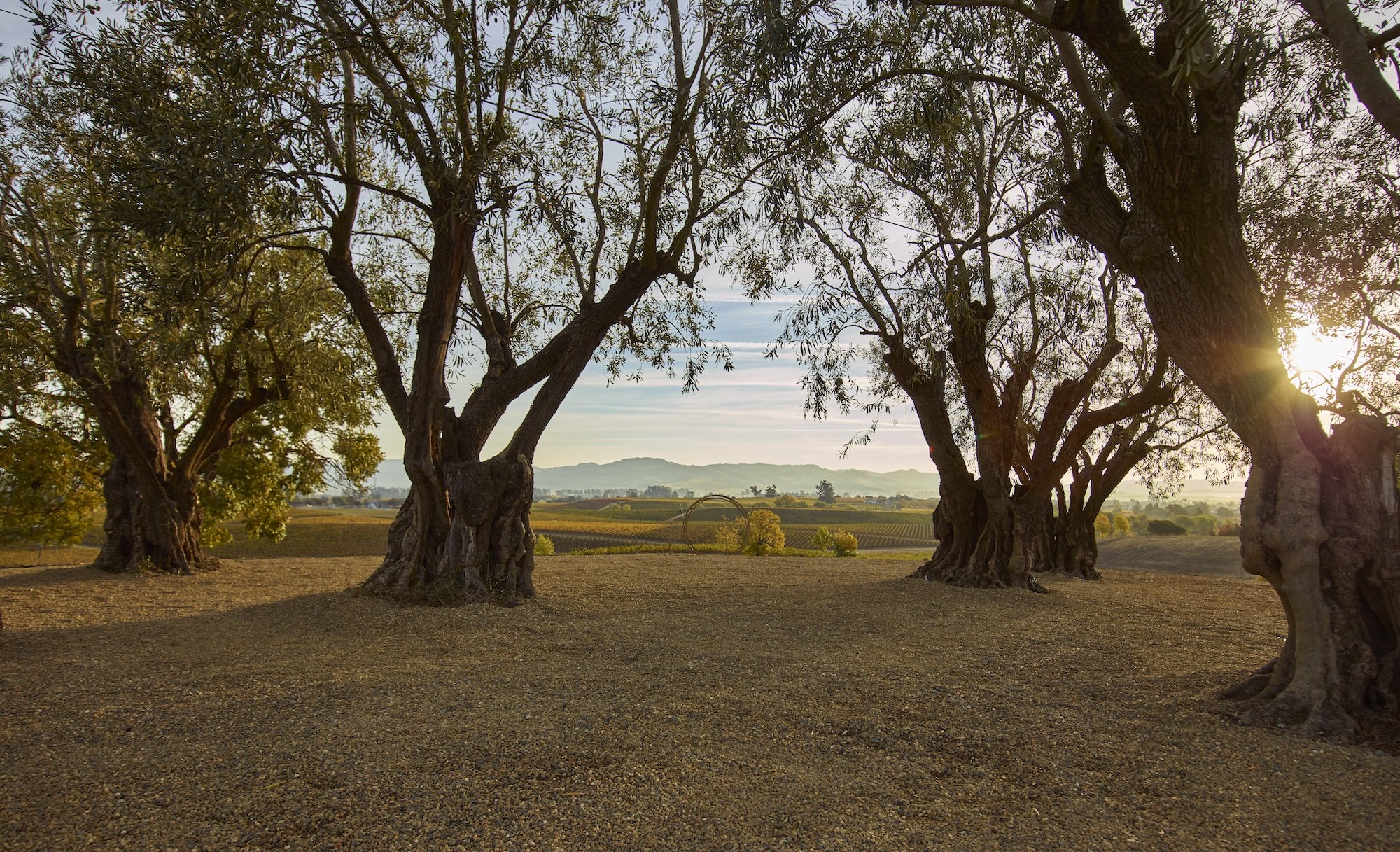How Climate Change is Impacting Olive Oil
In August 2023, quicker than anticipated escalation of extreme weather saw analysts predicting continued shortfalls in European olive production alongside triple-digit price increases.
Too Hot, Too Dry
Large olive trees
Excessive heat and drought significantly influenced the 2023 harvest. In fact, uncharacteristically dry weather across Mediterranean countries received blame for olive oil prices that had surged to 130 percent higher than 2022 prices. Also in the northern hemisphere, olive oil producer, Tunisia was experiencing growing conditions that mirrored the rest of Europe.
According to the International Olive Council, (IOC) multiple studies show a correlation between increased heat and greater water stress among Mediterranean olive groves, resulting in lower yields and greater need for irrigation.
Various news sources have reported that global olive oil production will likely decline to 2.407 million tons during the 2023-2024 crop year – the lowest overall yield since 2013-2014. The Mediterranean’s most prolific olive oil producer, Spain saw its harvest drop by more than 50 percent, from a five-year average of approximately 1.3 million metric tons to an astonishing 620,000 metric tons.
Nancy Ash in the lab
Nancy Ash recalls an interesting conversation from about 15 years ago, which hinted at the impact of climate change. President of Strictly Olive Oil LLC (near San Francisco), Ash is an olive oil taster and consultant who works with producers around the world.
“After I had done a project in Albania, I was approached by another California consultant who said he was talking with people who wanted to plant olive trees in Bulgaria, which is off the beaten path for olive trees. He said, “With the weather charts we’re looking at, it looks like in 25 years, it will be the perfect place to grow olives.”
Nicholas Coleman
Nicholas Coleman, Co-Founder & Oleologist at Grove and Vine has seen climate change’s impact firsthand, among global suppliers. “In 2023 a prolonged period of heat and drought in parts of Spain and Italy negatively affected production dramatically.
“In this capacity, the moment the olives formed on the tree, the heat caused them to turn black and fall to the ground. This decimated their crop and resulted in a significantly lower yield than in previous years.”
Excessive heat escalates an olive tree’s natural tendency to drop its fruit to save moisture or produce fruit without sufficient moisture. This, in turn, compromises the tree’s health. Coleman says, “The best producers plant the correct olive cultivar in its ideal microclimate, so they get a balanced fruit at the moment of harvest.”
Combating the Impact of Climate Change
Olive trees in Jaen photo credit Antonio Garcia Prats
But some Spanish olive growers have begun employing older cultivation methods, in hopes of reducing climate change’s impact. Approximately 30 percent of Spanish olive groves now plant rows of cover crops between olive trees – such as grasses and legumes – which can soak up and conserve water while restoring soil nutrients. In Italy, olive growers are also starting to use satellite imaging and other technology to determine how they can best use irrigation.
Ash says a lot of Californians started planting olive trees around 2000 because they were drought-resistant, and some even pulled out all their fruit trees. “All California producers have seen the effects of climate change, even though olive trees are drought resistant.
Close up of olives ripening
“Trees – and the olives - are still affected by drought. Large groves tend to not have irrigation and don’t have the infrastructure to add it. Most California groves do have irrigation but what they have encountered is the expense and runoff of the water. My feeling is that producers are concerned [about climate change] but are not taking actions like looking for different properties.”
Improving carbon balance amid olive groves has become one of the IOC priorities. Although planting, fertilization, pruning, harvesting, and pest control efforts associated with olive oil production do exacerbate greenhouse gas emissions, the organization’s 2017 Global Olive Oil Carbon Balance study indicated the world's olive groves could capture 47 million tonnes (103,617,263,227 Pounds) of CO2 per year and store it in the soil.





